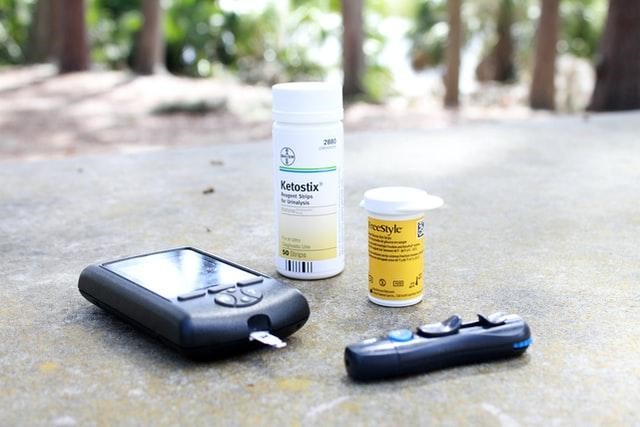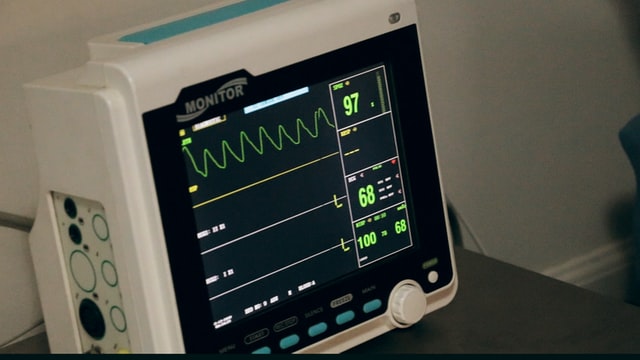
If you are considering using an insulin pump, you want to be sure it will work for you. An insulin pump can make managing your diabetes easier. Still, there are some issues that you should be aware of before making a decision.
Contents
With an insulin pump, you can control your blood sugar by adjusting the amount of insulin you receive. Insulin pumps are small portable devices that can deliver insulin through a catheter into the body.
They are typically worn on the body and controlled by a remote control device, usually worn on the wrist or clipped to clothing. They may be used by people with type 1 or 2 diabetes who require multiple injections each day but prefer less frequent injections than injections 4-6 times per day can provide (depending on how their body absorbs the bolus).
What are the downsides?
Size and Weight

It is large and heavy and weighs about the same. It also has to be worn in a bag or waist all day. The pump contains a long, thin set that goes into the skin and attaches to tubing. This can be invasive and uncomfortable. There may also be bleeding or fluid weeping from the injection site.
Insertion of the Set

The insertion of the set is one of the biggest drawbacks to insulin pump therapy. There are several reasons why this can be a problem:
- Insertion is painful. Since insulin pumps must be inserted under the skin, they require a needle and some poking around to get it right. This process is not going to be enjoyable or pain-free by any means.
- It can be difficult, if not impossible, for some people with diabetes (e.g., those with extremely high blood sugars). Because many people who use insulin pumps are children and teenagers, this disadvantage becomes significant because it affects a large chunk of the population who could benefit from using an insulin pump but cannot due to inexperience or lack of skill required for successful insertion into their skin.
- Insertion takes time – usually about 10 minutes per week from start to finish – which adds up quickly over time when considering how often you have to do this every day for your body's metabolism systems to function properly!
That's more than half an hour out of each week spent on one simple task like injecting yourself with a needle - imagine all those hours lost just sitting there staring at an IV pole while waiting patiently until everything goes according to plan (which isn't always guaranteed).
The Infusion Set
The Infusion Set is the small tube that's inserted into your skin. It contains the needle and reservoir, which houses the insulin. The infusion set is attached to your pump, so you can't lose it—and they're reusable.
The infusion site can be changed whenever you want, but if you need a new one because of swelling or irritation, try to go with an area as close to where your last one was as possible (i.e., don't move it too far away). Before inserting a new infusion site, cleanse it well with alcohol wipes—don't try to sterilize with soap or water; this could irritate your skin further!
High Costs

One of the biggest disadvantages of insulin pumps is the cost. The pump can be relatively high-priced, and without insurance coverage, it can be difficult to purchase one.
The infusion sets (the part that attaches to your body) and cannula (the tube that goes into your skin) may also be costly. Infusion sets are used every night or multiple times a day for about five days each before needing to be replaced; sometimes, they need replacing more often than that due to wear and tear from daily use.
Cannulas are usually worn for about two weeks at a time before being replaced by another one so that any bacteria present doesn't have time to grow in them during long periods of use. The cost of these accessories can add up quickly over time if you're using them every single day!
Risk of failure of Equipment

One of the disadvantages of insulin pumps is that equipment failure can be dangerous. The pump itself needs to be able to be replaced, and if you can't contact customer service at any time, it may become an issue.
In addition, there are many different types of insulin pumps on the market today. Some are more advanced than others, but they all have their own advantages and disadvantages to consider before making a final decision about which one you want to use for your diabetes treatment plan.
Customer Service Issues

Customer service issues with insulin pumps can be a significant problem. If you need to contact customer service, it may be challenging to find the right person. Many different companies make insulin pumps, and they all have different customer service departments.
The company that manufactured your pump might not have a good relationship with the company that has your insurance contract, so getting reimbursement for repairs or malfunctions can be very difficult.
If you need parts or supplies, it’s possible that your pump won’t work with those parts or supplies because of its unique design limitations (for example, some pumps don’t work well with certain brands of tubing).
Skin Irritation
Skin irritation is a common side effect of using an insulin pump. It can cause pain, swelling, redness, burning, and itching. When you’re using an insulin pump, you are constantly inserting the needle into your skin as part of delivering your medication.
If you do not take proper care of the injection site by cleaning it properly or keeping it covered with bandages at all times, then this can trigger skin irritation.
To avoid this issue:
- Always clean the injection site thoroughly before injecting insulin into it; use alcohol swabs or soap and water to cleanse the area first to reduce infection risk
- Change out your needle cartridges regularly - once every 10 days for most people
- Cover any newly inserted sites with gauze bandages until they heal completely
Occlusions or Malfunctions with the Cannula

Occlusion is an obstruction of the flow of insulin from the pump, which can result in your device pumping air into your body. This can be a scary experience, especially if it happens while you're asleep or when you don't notice it right away.
Occlusions can be caused by several things:
- Debris or clogging on the cannula (the plastic tube that connects the pump to your body)
- Incorrect insertion angle or depth into the skin
- Too much pressure was applied during insertion
How do you know if you have an occlusion? If you feel like something is wrong with your infusion site, but there's no visible damage, call Dr Google and ask him what might be going on before taking action yourself!
If you think that occlusion may have occurred, check for bubbles when viewing through any available viewing portals (some pumps have windows where users can see their infusion sites), and also check for discolouration around the infusion site area—if either one of these signs pops up after noticing symptoms like fatigue or dizziness, then it's time to take action!
You should be aware of some possible issues with the insulin pump.

The following are some potential problems, side effects, and risks associated with insulin pumps:
- Insulin pumps can cause skin irritation or allergic reactions. Try different infusion sites to see if you have less reaction. If the reaction continues, contact your doctor, who may prescribe another type of insulin or anti-inflammatory medication to help with these reactions.
- Your blood sugar levels can rise too high if you do not use an external glucose monitor (CGM) along with your pump because this will warn you about hypoglycemia and hyperglycemia before they occur in most cases (it doesn't mean that they won't happen).
How to properly use insulin pumps

- Use a new needle each time you give yourself an injection.
- Use a new insulin cannula each time you attach your infusion set to the pump and before each change of site of your infusion set (like switching from your abdomen to your thigh).
- Use a new infusion set each time you attach the pump to a new part of the body or if its integrity has been compromised somehow, like if it becomes wet or otherwise damaged due to handling or use during exercise or bathing (you should also replace it every 2 days).
- Use a new insulin pump after three weeks or when any of these things happen: You take off all removable parts; You have an open wound on which to attach an infusion site; You are unable to obtain another cartridge due to lack of funds, insurance restrictions, etc.; Your supply of cartridges runs out before three weeks pass—it’s better not to risk running out completely!
The bottom line
Many people are wary of insulin pumps because they think they're too complicated or that they'll be hard to use. But it's important to remember that any medical device is only as good as the person using it.
Suppose you have a good understanding of how your pump works and you're willing to put in some time practising before starting treatment. In that case, an insulin pump may be the best option for managing your diabetes.





